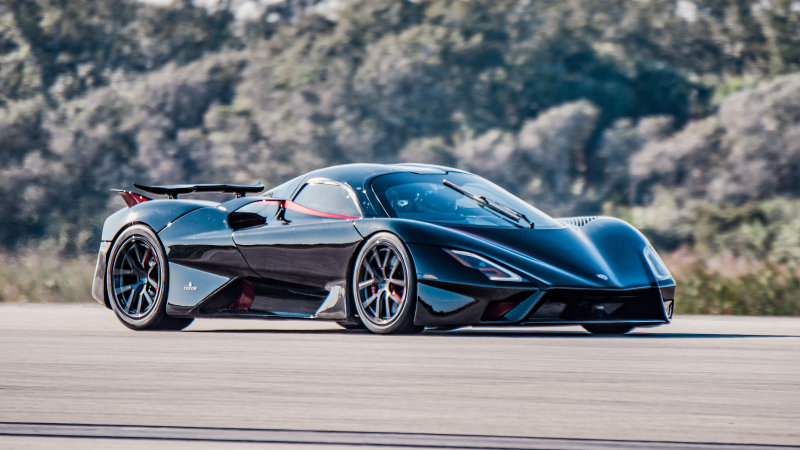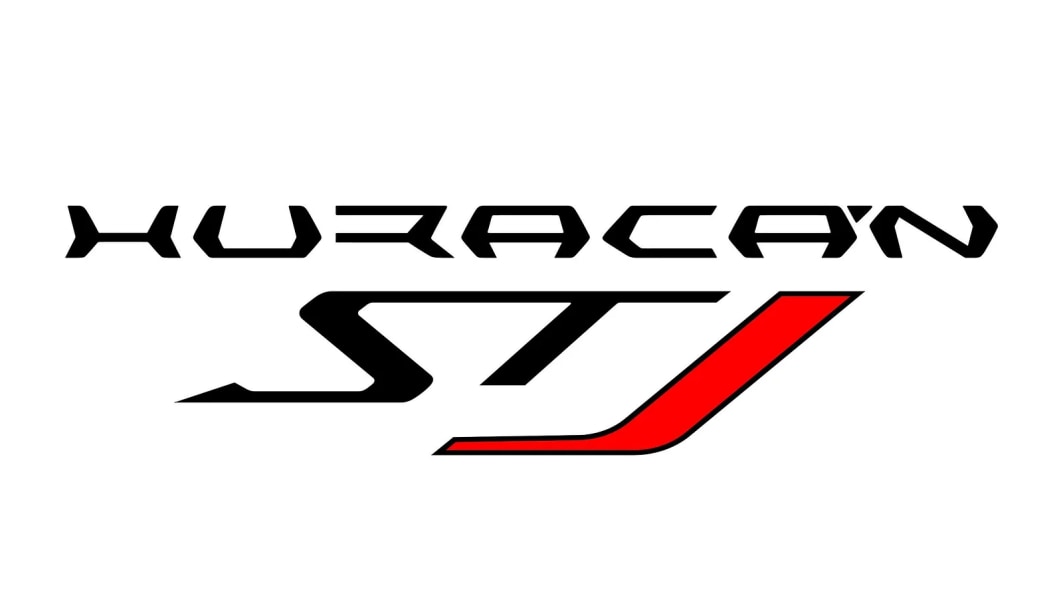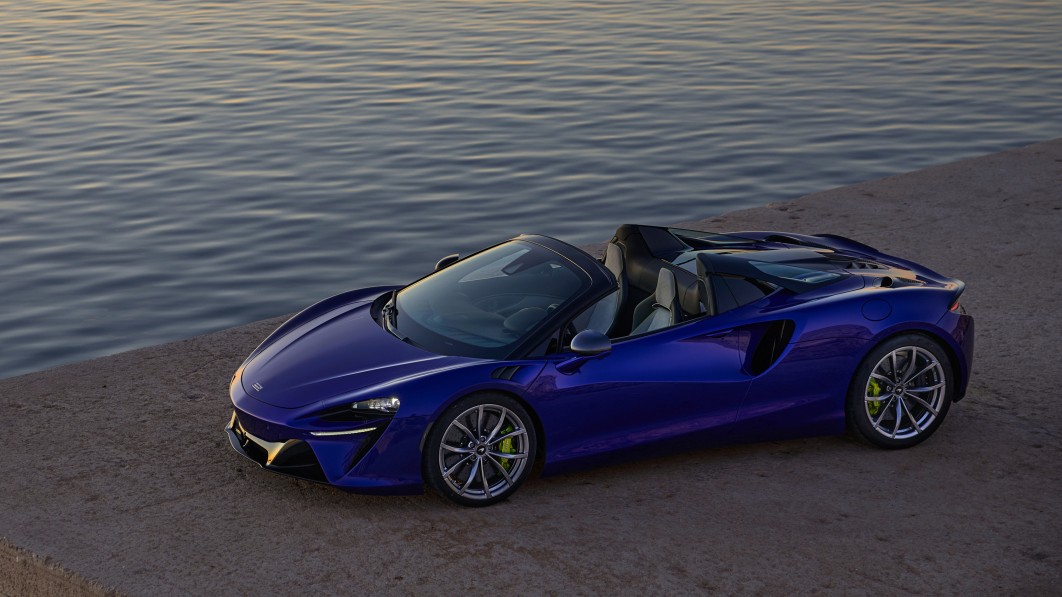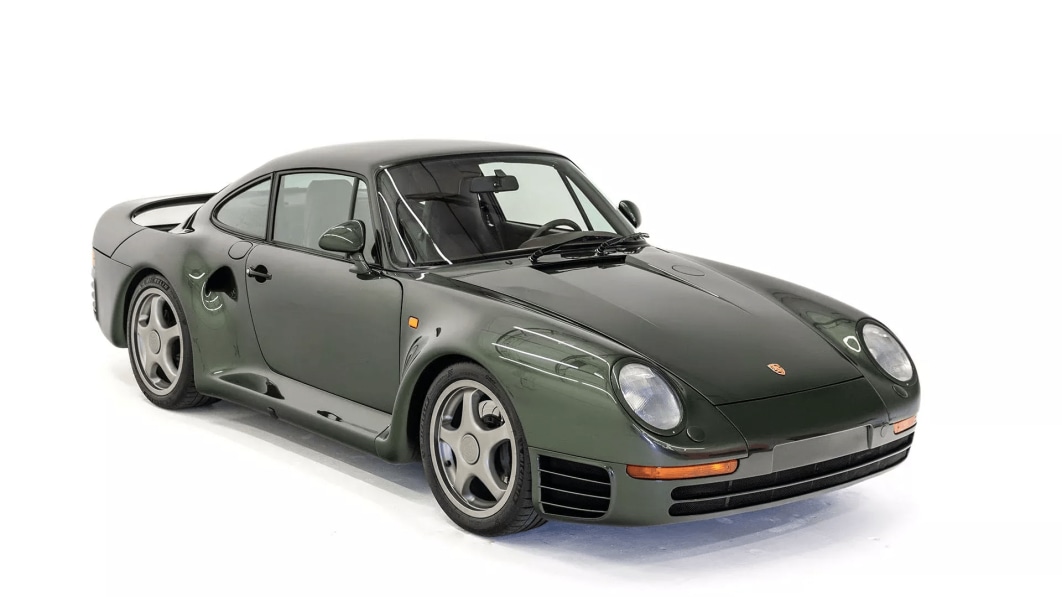SSC just completed a third attempt at taking the record for the fastest production car in the world. The first attempt was marred by controversy after controversy (video footage inconsistencies and GPS calibration issues). The second attempt never really got off the ground due to problems with the car. Third time’s the charm, right?
According to SSC, yes, it is. Jerod Shelby and the SSC team are once again saying the Tuatara beat the Koenigsegg Agera RS for fastest production car in the world. This time, the margins are much closer, though. SSC says this latest attempt ended with a two-way average of 282.9 mph, which is just 5 mph more than the Koenigsegg’s two-way average of 277.9 mph.
The top speed runs took place on the Johnny Bohmer Proving Grounds at the Kennedy Space Center in Florida. An initial northbound run saw the Tuatara hit 279.7 mph, and in the southbound run, it hit 286.1 mph.
SSC says it used many different GPS data acquisition units to be sure of its numbers. Equipment from Racelogic, Life Racing, Garmin and IMRA were all in the car for the run. The Racelogic box was the primary logger, and the others were in the car for comparison’s sake to make sure everything came out rosy. The North American director for Racelogic, Jim Lau, both installed and verified the data that it captured. Racelogic put out a press release in conjunction with SSC today, underlining and verifying the results for the Tuatara’s record run.
Racing driver Oliver Webb wasn’t driving the Tuatara this time around. Instead, SSC had the actual owner of the Tuatara make the record attempt, Dr. Larry Caplin. He had much less space to bring the Tuatara up to speed due to the length of the runway. The whole run took place in 2.3 miles, versus the 7-mile stretch Webb had at his disposal in Nevada. Of course, this necessitated much more aggressive acceleration up to speed for there to be space to stop. SSC says that Dr. Caplin used 1.9 miles for acceleration, and the rest of the runway as a braking zone.
Video of the two runs can be found above.
We asked Jerod Shelby a number of questions about the Tuatara’s latest run, and his answers can be found below. The big takeaway is that SSC is far from done with its hunt for top speed supremacy.
“This current release is really just an update on the progress of our current, and ongoing, top speed testing,” Shelby told us. “Although we did just complete an actual official and verified record, it certainly was not our last official attempt of the near future. We are currently in the planning stages to return this spring to continue testing and attempt to break our own record and surpass 300 MPH at this same venue.”
Hitting 300 mph isn’t anywhere close to the 331 mph it was initially claimed to hit in Nevada, but any speed starting with a 3 is still nothing to scoff at. Shelby thinks it’s completely within the realm of possibility, as the team only gave Dr. Caplin full power in seventh gear on his final pass when he hit 286.1 mph. Theoretically, Shelby believes there’s a lot more in the tank for this specific location.
We also asked Shelby to give us a full download and explanation for how it went about capturing the data with all of the equipment.
“My public commitment this time was to utilize multiple GPS/Measurement groups, so that there were multiple levels of redundancy and to make sure that staff from those companies were in charge of installing, monitoring, reporting and validating the equipment and the speeds and distances that they produced,” Shelby said. Since Racelogic is highly respected in the automotive industry, we basically used all the other measurement devices to see if they aligned with the multiple Racelogic VBox devices that were onboard the Tuatara. The end result was … they all aligned.”
Shelby also released an official statement in a press release sent out with the latest news.
“We took a different approach this time in accelerating the car to the higher speeds. Larry Caplin, who owns the car, used a ‘drag race’ style of acceleration during the record runs, pulling full throttle and boost for 40-50 seconds. Back in October we were leaning into the speed much slower and used only about 20-25 seconds of full throttle and boost during the run. The difference is impressive both performance and operation wise. Larry pulled off a run that was far more difficult, at least by a factor of four, than what we attempted in Nevada.”
SSC put out a short statement from Caplin himself, too: “I got a taste of full power in the top of seventh on the last run. I am excited to come back and break 300 mph.”
So, SSC will definitely be back again. It sounds like we’ll need to wait for spring to hear more, but the next runs will be about extending the Tuatara’s lead. We’re sure Koenigsegg is watching.
This story will be updated with more details as we learn them from SSC and Jerod Shelby.




